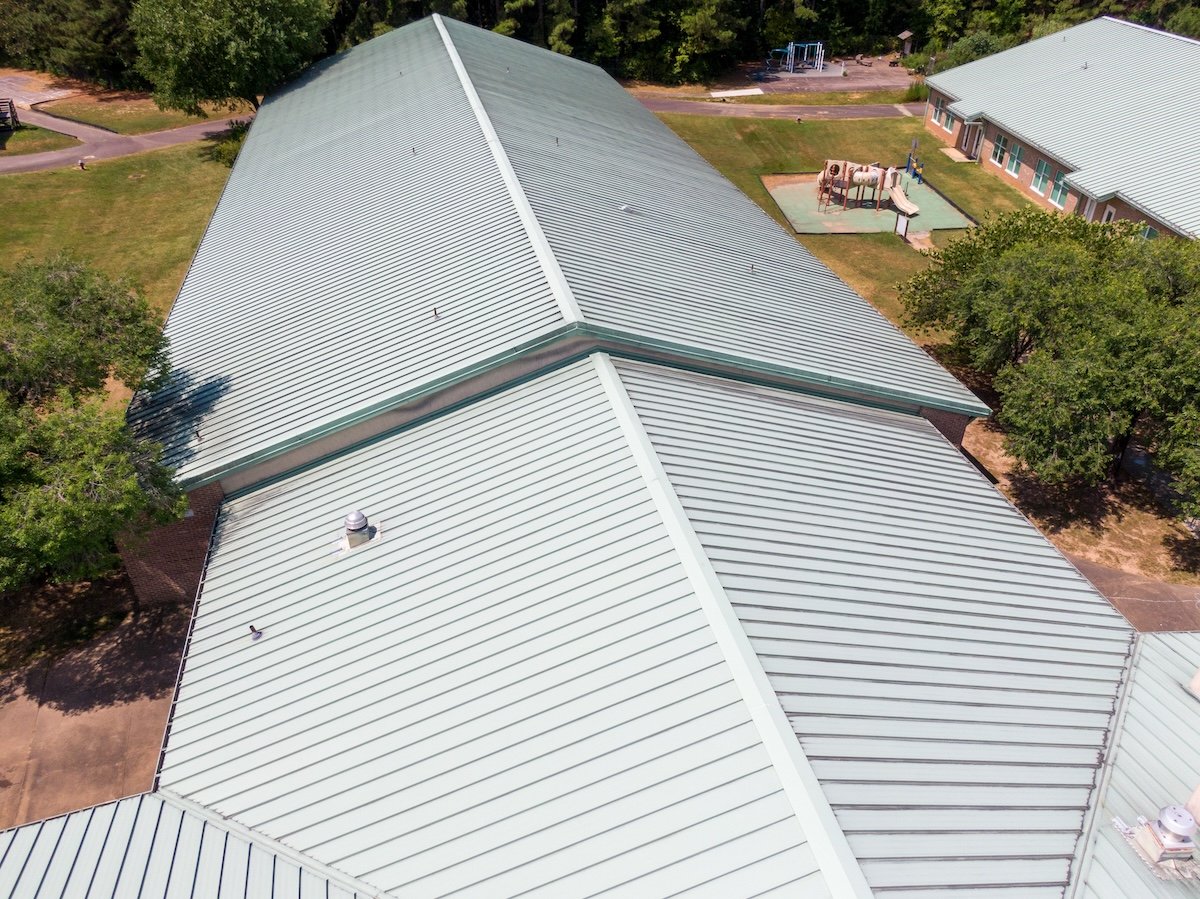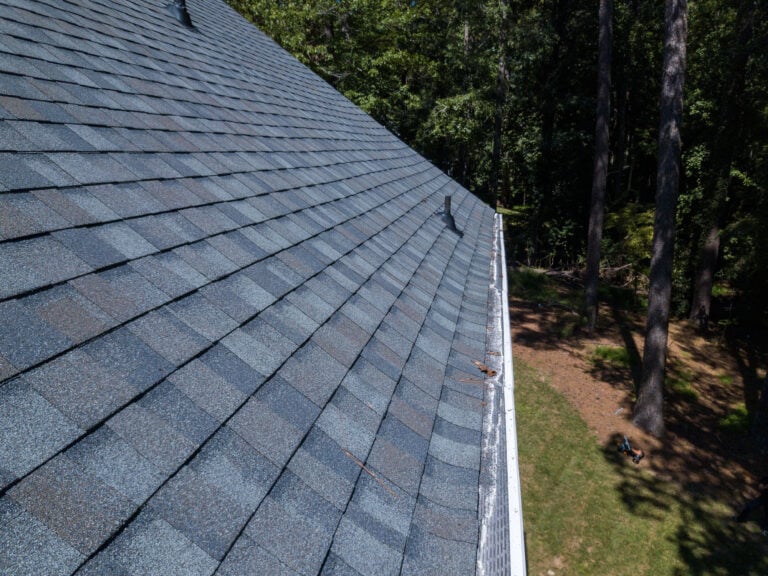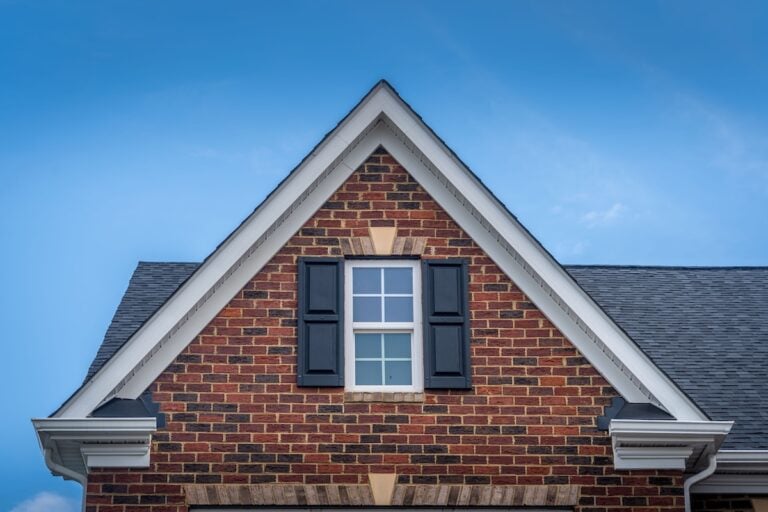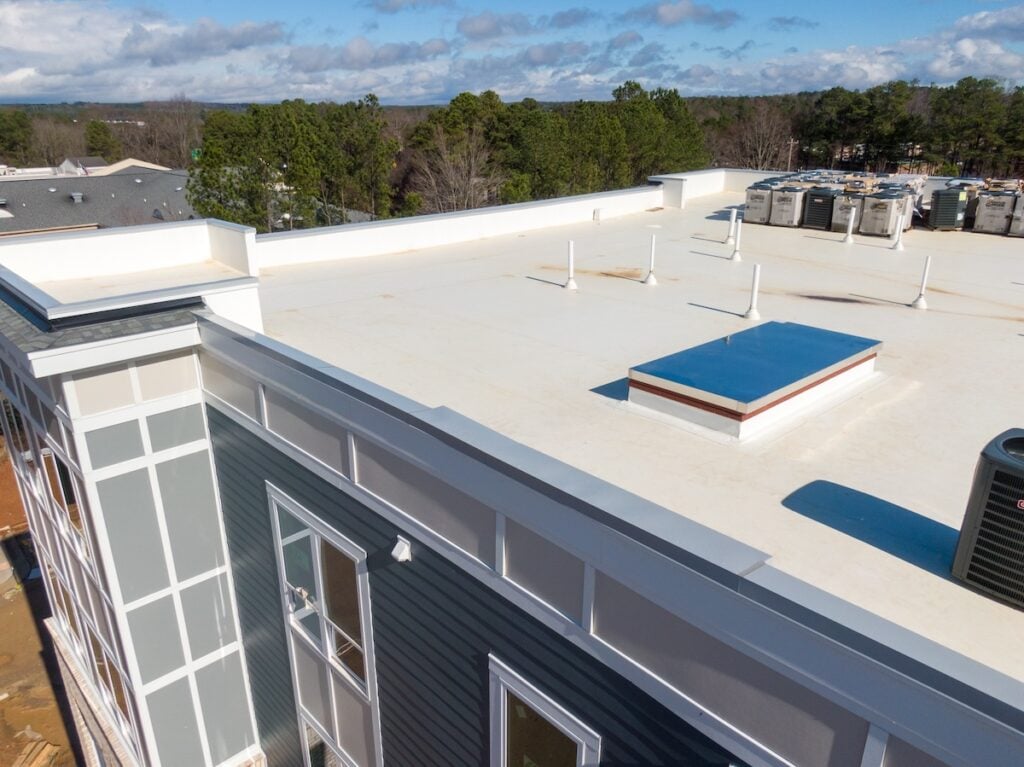
Commercial roof installation is no small task. Whether you’re outfitting a new building or upgrading an existing structure, this process comes with unique challenges and decisions that can impact the safety, efficiency, and longevity of your property.
For business owners, understanding the critical aspects of commercial roof installation can save time, money, and stress while ensuring a roof that lasts for decades. This guide breaks down the essential considerations for any commercial roof installation project, including:
- What is commercial roof installation?
- Roofing System Types: What Commercial Building Owners Should Know
- Understanding the installation process and timeline
- Cost & Investment Insights
- Maintenance tips to extend the life of your roof
🤔 What is Commercial Roof Installation?
Commercial roof installation refers to the process of constructing or replacing roofs specifically designed for non-residential buildings, such as office spaces, warehouses, retail stores, manufacturing facilities, schools, and hospitals. Unlike residential roofs, which are often steeply pitched, commercial roofs are typically flat or low-sloped, requiring specialized materials, techniques, and expertise to ensure optimal performance and longevity.
The process of commercial roof installation involves several critical steps to meet the unique demands of non-residential buildings. It starts with assessing the building’s structural requirements, insulation needs, and local climate conditions to determine the best roofing system. Some of the most common roofing materials used include TPO (Thermoplastic Polyolefin), EPDM (Ethylene Propylene Diene Terpolymer), modified bitumen, built-up roofing (BUR), and metal roofing systems. Each material offers distinct advantages in terms of durability, energy efficiency, cost, and maintenance requirements.
Understand the Types of Commercial Roofing Systems
When planning a commercial roof installation, selecting the right roofing system is as important as choosing the contractor. Below are the main types, with pros, cons, and what to think about in your climate and code domain.
Single-Ply Membranes (TPO / EPDM / PVC)
What they are
These are large sheets (membranes) of synthetic material installed on flat or low-slope commercial roofs. They are fastened mechanically, adhered, or ballasted.
TPO (Thermoplastic Polyolefin)
- Pros: Very good reflectivity (especially if white), energy savings; often more cost-effective than PVC; seams welded heat-welded to create good waterproofing.
- Cons: Quality differences in TPO exist; thin membranes may have shorter life; may be more vulnerable to foot traffic punctures; warranty often tied to correct installation.
EPDM (Rubber)
- Pros: Long track record; flexible; performs well in temperature swings; generally lower initial cost among single-ply options.
- Cons: Dark EPDM absorbs heat unless lighter color or coatings used; seams may use adhesive/tape instead of welded, which can be weak under some conditions; color and aesthetic options limited.
PVC (Polyvinyl Chloride)
- Pros: Excellent in resisting chemicals, grease, fire; strong reflective properties; durable over time.
- Cons: Higher cost; sometimes more difficult to source; seam welds must be done well; may shrink slightly, requiring specialized installation.
Modified Bitumen / BUR (Built-Up Roofing): These are layered systems: alternating layers of asphalt or bitumen with reinforcement fabric, possibly topped with gravel or mineral granules.
- Pros: Good waterproofing, redundancy (layers), good for heavy water capacity and foot traffic; well-proven in many commercial settings.
- Cons: Heavier; more labor-intensive; seams and flashing detail critical; less reflective unless special surfacing added; may require more maintenance over years.
Metal Roofing / Panels: Often used for commercial roofs with slope or architectural detail; also sometimes used for standing seam flat-to‐low slope in certain designs.
- Pros: Very durable; long lifespan; excellent wind / fire resistance; good resale/tenant appeal; good for water runoff.
- Cons: Higher cost; risk of thermal expansion / noise; requires proper fastening; may need insulation and waterproofing; visible fasteners or panel joints must be well detailed.

✅ 5 Step The Installation Process
The commercial roof installation process is a crucial step to ensure everything is set up correctly and functions as intended. A smooth, efficient process saves time and helps avoid potential issues down the line.
1: Initial Consultation and Inspection
The process begins with a thorough conversation about your goals, expectations, and specific needs for your commercial property. This is followed by a detailed inspection of your roof by experienced professionals to assess its current condition, identify any structural issues, and determine the scope of work required. At Palladium Roofing, we offer complimentary inspections to give businesses the insights they need to make informed decisions without any upfront cost or commitments. This step ensures that the project starts with a clear understanding of your property and objectives.
2: Material Selection
Choosing the right roofing material is a crucial step that directly impacts the durability, energy efficiency, and appearance of your commercial roof installation. During this phase, your contractor will guide you through the variety of options available, helping you select a material that aligns with your budget, the type of building, and the local climate. Whether it’s traditional asphalt, durable TPO, or metal roofing, each material offers distinct advantages. The goal is to ensure that the chosen material not only meets today’s needs but also performs well for years to come.
3: Project Timeline
After the inspection and material selection, the contractor will work with you to establish a realistic project timeline. This timeline takes into account the size of the roof, the complexity of the design, weather conditions, and the availability of materials. Most commercial roof installation projects can range from a few days to several weeks, depending on these factors. Clear communication about the timeline ensures that you can plan your business operations accordingly and reduces any potential disruptions to your daily activities.
4: Installation
The commercial roof installation phase is where all the planning comes to life. Professional contractors will carefully remove any old materials (if applicable) and prepare the roof for the new installation. The selected roofing materials are then meticulously laid down using industry-leading techniques, ensuring durability and long-term performance. Throughout the installation process, safety standards are rigorously followed to protect workers, your property, and the surrounding area. Quality control checks are performed at every stage to ensure a flawless installation that meets all expectations.
5: Final Walkthrough
Once the commercial roof installation is complete, the contractor will conduct a final walkthrough with you to review the work. During this step, the team will explain the completed project, address any concerns or questions, and ensure that the installation meets your satisfaction. Transparency and thoroughness are key priorities, and companies like Palladium Roofing pride themselves on delivering a seamless experience from start to finish. This final review ensures that you’re fully confident in the quality of your new roof and its ability to protect your property for the long term.
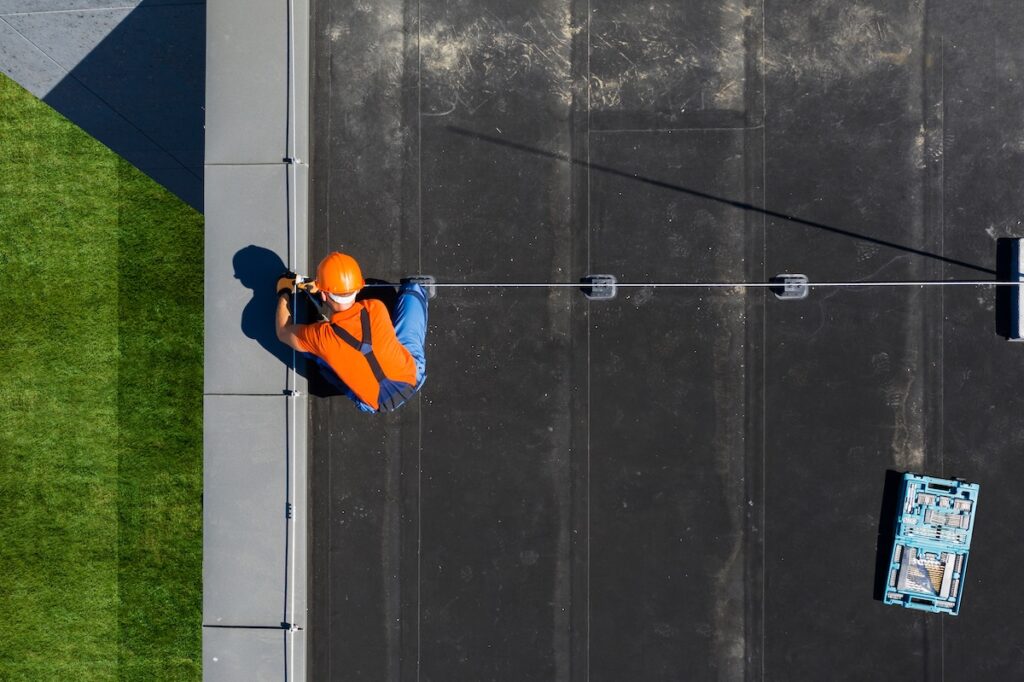
Cost & Investment Insights
When considering a commercial roof installation, understanding what you’re paying now vs what you’ll spend or save in the future is key. Here’s what property owners should know about costs, long-term value, and trade-offs.
Upfront Cost Drivers
Several factors heavily influence the cost of a COMMERCIAL ROOF INSTALLATION:
- Roof size, slope, and complexity: Larger roof areas cost more due to more materials and labor. A flat roof is different than one with multiple roofs, penetrations, parapets or equipment.
- Material type and quality: Premium systems (like thicker single-ply membranes, metal, or highly reflective TPO/PVC) cost more up front than more basic membranes or simpler systems.
- Labor, removal, and existing structure: If there’s an old roof to remove, damaged structure, or special equipment/access required, labor (and disposal) adds to cost.
- Permits, code compliance, warranties & inspections: Meeting local wind/fire/energy codes, using warranty-approved materials, and getting inspections are part of cost too.
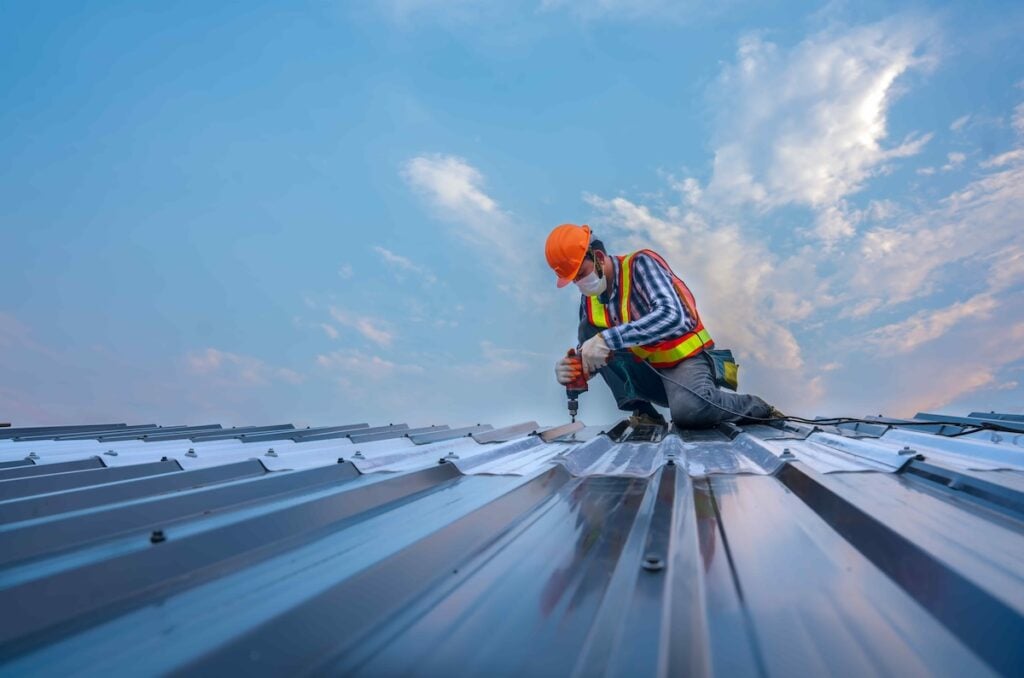
👉 Extend the Life of Your Commercial Roof
The longevity of your roof depends on consistent maintenance. Follow these tips to maximize its lifespan:
Quarterly Inspections
Scheduling regular roof inspections every three months is essential to catch potential issues early. These inspections allow you to identify small problems, such as loose shingles or minor wear and tear, before they escalate into costly repairs. Professional inspections can provide a more thorough assessment, ensuring your roof stays in top condition.
Clear Debris
Keeping your roof clear of debris such as leaves, branches, and dirt is crucial for maintaining proper drainage. Accumulated debris can block gutters and cause water to pool, leading to leaks and structural damage over time. Make it a habit to clean your roof and gutters regularly, especially after storms or during the fall season.
Fix Minor Problems Immediately
Addressing small issues like leaks, cracks, or damaged shingles as soon as they appear can save you from costly repairs in the future. Ignoring minor damage can cause it to worsen over time, resulting in larger problems like water damage, mold growth, or structural issues. Quick repairs ensure your roof remains durable and efficient.
🏢 Commercial Roof Guide
Choosing the right team for your commercial roof installation is crucial to protecting your investment and ensuring long-term durability. At Palladium Roofing, we combine unparalleled expertise, premium materials like Malarkey Emerald Premium products, and a commitment to putting customers first. Our certified commercial roofing experts deliver quality solutions tailored to your unique needs, whether for a small business or a large commercial space.
Don’t settle for less when it comes to your business—trust the team that prioritizes excellence and peace of mind. Contact Palladium Roofing today for a free inspection and customized quote. Let’s build something that lasts.


